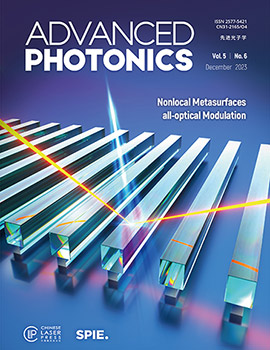用于衍射层析成像的基于物理的神经网络
IF 18.8
1区 物理与天体物理
Q1 OPTICS
引用次数: 7
摘要
摘要我们提出了一个物理信息神经网络(PINN)作为生物样本层析重建的正演模型。我们证明了用亥姆霍兹方程作为物理损耗来训练这个网络,可以准确地预测散射场。结果表明,预训练的网络可以对不同的样本进行微调,并用于比其他数值解更快地解决散射问题。我们用数值和实验结果来评价我们的方法。我们的pin可以推广到任何正散射和逆散射问题。本文章由计算机程序翻译,如有差异,请以英文原文为准。
Physics-informed neural networks for diffraction tomography
Abstract. We propose a physics-informed neural network (PINN) as the forward model for tomographic reconstructions of biological samples. We demonstrate that by training this network with the Helmholtz equation as a physical loss, we can predict the scattered field accurately. It will be shown that a pretrained network can be fine-tuned for different samples and used for solving the scattering problem much faster than other numerical solutions. We evaluate our methodology with numerical and experimental results. Our PINNs can be generalized for any forward and inverse scattering problem.
求助全文
通过发布文献求助,成功后即可免费获取论文全文。
去求助
来源期刊

Advanced Photonics
OPTICS-
CiteScore
22.70
自引率
1.20%
发文量
49
审稿时长
18 weeks
期刊介绍:
Advanced Photonics is a highly selective, open-access, international journal that publishes innovative research in all areas of optics and photonics, including fundamental and applied research. The journal publishes top-quality original papers, letters, and review articles, reflecting significant advances and breakthroughs in theoretical and experimental research and novel applications with considerable potential.
The journal seeks high-quality, high-impact articles across the entire spectrum of optics, photonics, and related fields with specific emphasis on the following acceptance criteria:
-New concepts in terms of fundamental research with great impact and significance
-State-of-the-art technologies in terms of novel methods for important applications
-Reviews of recent major advances and discoveries and state-of-the-art benchmarking.
The journal also publishes news and commentaries highlighting scientific and technological discoveries, breakthroughs, and achievements in optics, photonics, and related fields.
 求助内容:
求助内容: 应助结果提醒方式:
应助结果提醒方式:


